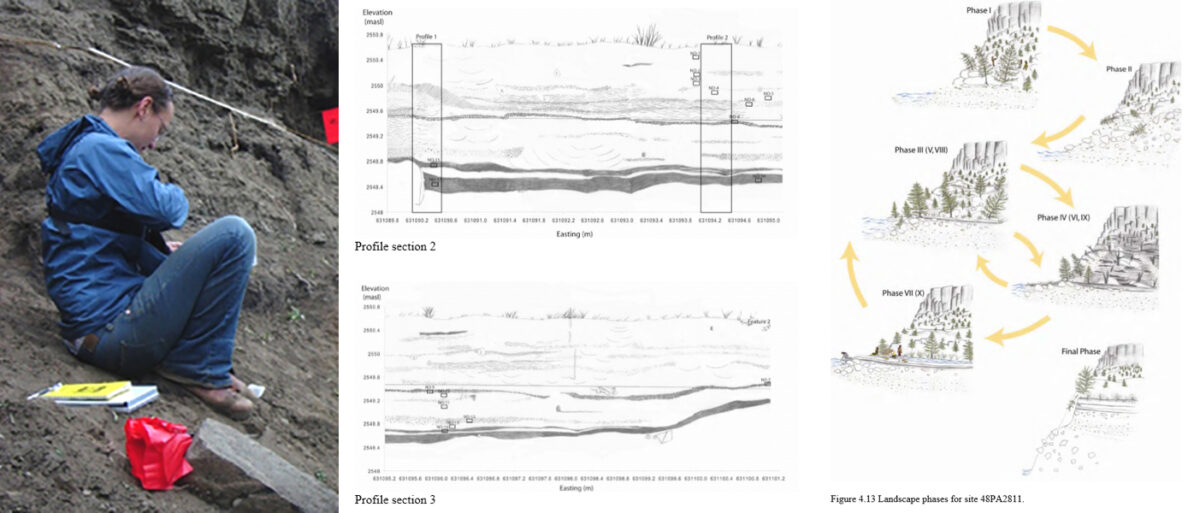LANDSCAPE CHANGE AND STABILITY IN THE ABSAROKA RANGE, GREATER YELLOWSTONE ECOSYSTEM, WYOMING
Click Thesis title to open fulltext pdf version of complete thesis
ABSTRACT OF THESIS
The archaeological record in the Upper Greybull of northwestern Wyoming is an
integral part of landscape dynamics. A dominant force across this region is landslides, and over 60% of archaeological sites in this study were found to be associated with remnant landslide features. These relationships are analyzed at two different spatial scales to better understand landscape evolution in the Upper Greybull.
An investigation of site 48PA2811 shows the relationship between disturbance
regimes, environmental change, and archaeological preservation at a local scale. This investigation included the documentation of surface and subsurface archaeological deposits, site geomorphology, physical and chemical soil analyses, site stratigraphy, and radiocarbon dating. Based on these analyses, over the last 3,000 years 48PA2811 has witnessed four periods of soil formation, followed by forest fire and rapid burial, and three separate human occupations. Fire and sedimentation resulted in the rejuvenation of biological communities, but chemical properties in the buried soils do not indicate dramatic changes in vegetation. Events at 48PA2811 parallel regional and even global scale changes. Based on radiocarbon dates from burned A horizons at 48PA2811, the Medieval Climatic Anomaly may have had an impact on local environment at 48PA2811,
leading to drought and fires.
From a regional perspective, across the Upper Greybull the relationship with
landslide formations and archaeology offers potential for modeling landscape evolution in the region. The archaeological record indicates changes in landslide frequency and magnitude in the Upper Greybull since the Pleistocene. Through the Holocene, there has been an increase in the frequency of landslides accompanied by a decrease in size. The reason for this transition may be due to an increase in fires brought about by drier conditions in the late Holocene. It is also possible that humans played a role in the increase in disturbance regimes through time. The increase in landscape change in the late Holocene as indicated by the landscape history of 48AP2811 and regional landslides patterns is an important consideration in interpreting human use of mountain ecosystems through time.
Naomi Ollie. Department of Anthropology, Colorado State University, Fort Collins, Colorado 80523. Fall 2008

